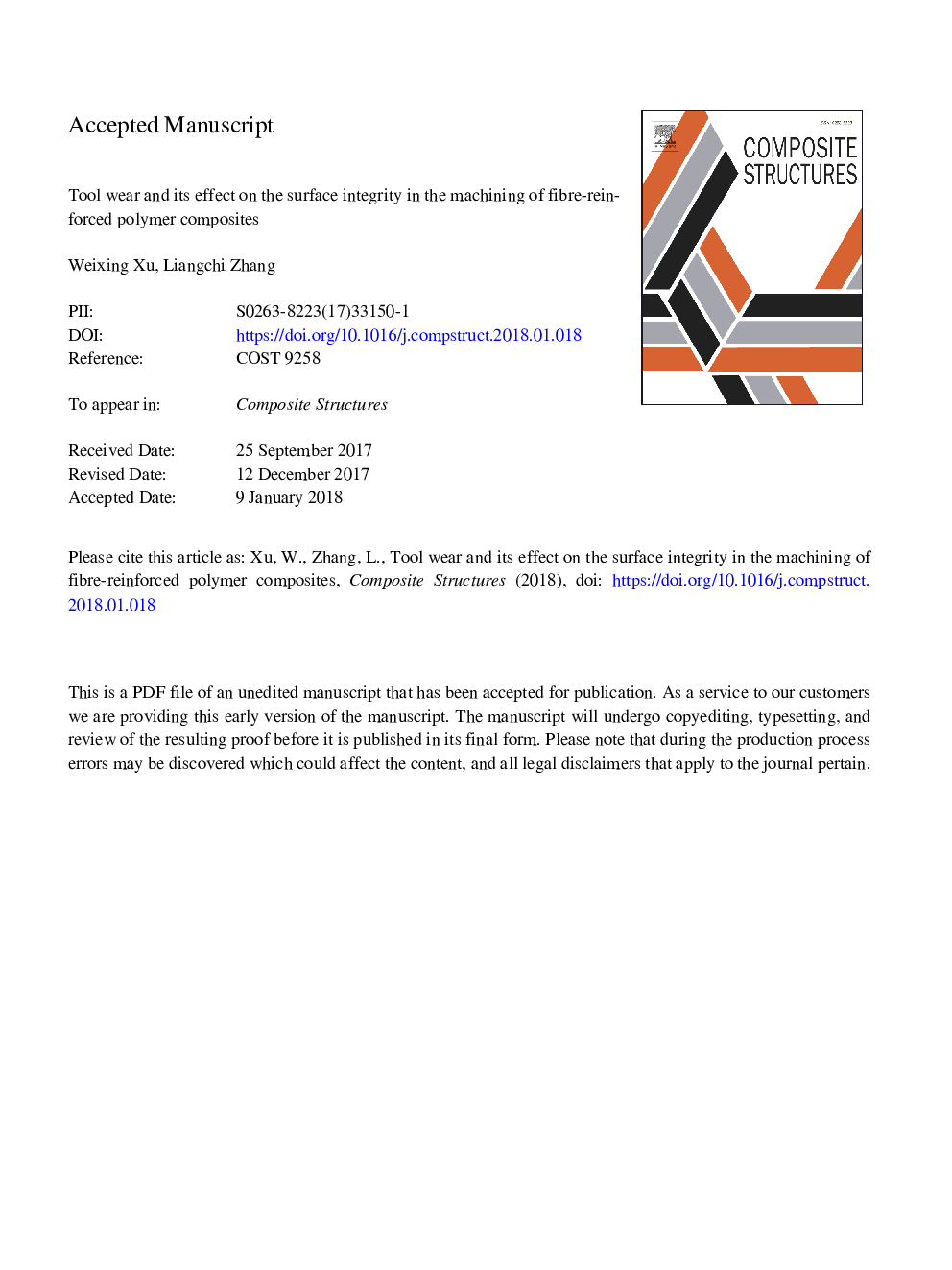| Article ID | Journal | Published Year | Pages | File Type |
|---|---|---|---|---|
| 6704078 | Composite Structures | 2018 | 29 Pages |
Abstract
This paper investigates, both experimentally and theoretically, the tool wear in the cutting of fibre-reinforced polymer composites as well as its effect on the surface integrity of the machined composites. It was found that the main mechanism is friction-caused flank wear, and that the introduction of ultrasonic vibration to the cutting tool can drastically reduce its wear rate. It was identified that tool wear not only influences cutting forces and chip formation as usually understood, but also affects significantly the material removal mechanisms and surface integrity of the machined composites. The study revealed that in a traditional cutting process, the chip formed by a fresh cutting edge is larger than that by a worn cutting edge, and that friction-induced bending fracture can occur in a machined subsurface as the tool wears out. The vibration-assisted cutting, however, reduces tool wear due to the much shortened tool-workpiece contact time in each cycle of the tool vibration.
Related Topics
Physical Sciences and Engineering
Engineering
Civil and Structural Engineering
Authors
Weixing Xu, Liangchi Zhang,
